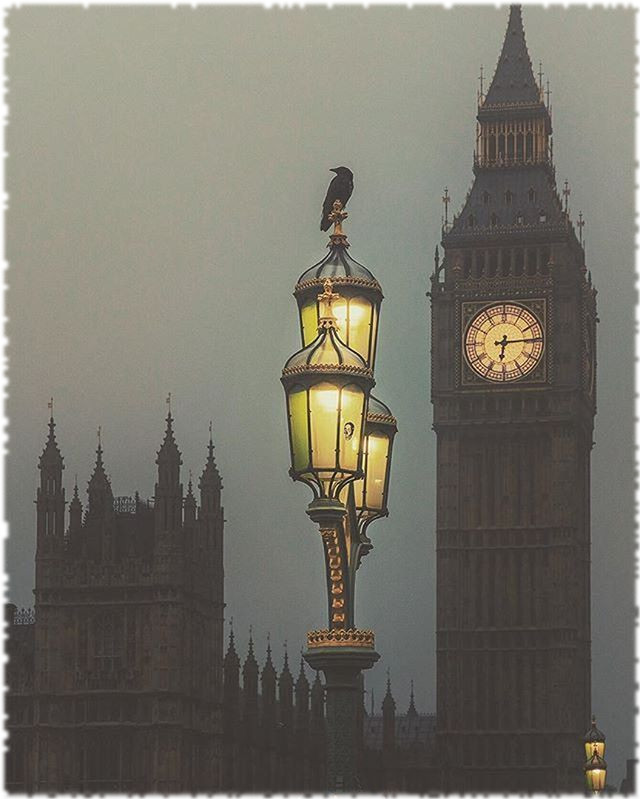Great Clock of Westminster
The Tower
Origins
Elizabeth Tower, previously called the Clock Tower but more popularly known as Big Ben, was raised as a part of Charles Barry's design for a new palace, after the old Palace of Westminster was largely destroyed by fire on the night of 16 October 1834. The new parliament was built in a neo-gothic style. Although Barry was the chief architect of the palace, he turned to Augustus Pugin for the design of the clock tower, which resembles earlier Pugin designs, including one for Scarisbrick Hall in Lancashire. The design for the tower was Pugin's last design before his final descent into madness and death, and Pugin himself wrote, at the time of Barry's last visit to him to collect the drawings:
"I never worked so hard in my life for Mr Barry for tomorrow I render all the designs for finishing his bell tower & it is beautiful."
Design
The tower is designed in Pugin's celebrated Gothic Revival style, and is 315 feet (96.0 m) high. The bottom 200 feet (61.0 m) of the tower's structure consists of brickwork with sand-coloured Anston limestone cladding. The remainder of the tower's height is a framed spire of cast iron. The tower is founded on a 50 feet (15.2 m) square raft, made of 10 feet (3.0 m) thick concrete, at a depth of 13 feet (4.0 m) below ground level. The four clock dials are 180 feet (54.9 m) above ground. The interior volume of the tower is 164,200 cubic feet (4,650 cubic metres).
Despite being one of the world's most famous tourist attractions, the interior of the tower is not open to overseas visitors, though United Kingdom residents were able to arrange tours (well in advance) through their Member of Parliament.
Due to changes in ground conditions since construction, the tower leans slightly to the north-west, by roughly 230 millimetres (9.1 in) over 55 m height, giving an inclination of approximately 1⁄240. This includes a planned maximum of 22 mm increased tilt due to tunneling for the Jubilee line extension. It leans by about 500 millimeters (20 in) at the finial. Experts believe the tower's lean will not be a problem for another 4,000 to 10,000 years. Due to thermal effects it oscillates annually by a few millimeters east and west.
Name
Journalists during Queen Victoria's reign called it St Stephen's Tower. As MPs originally sat at St Stephen's Hall, these journalists referred to anything related to the House of Commons as news from "St. Stephens" (the Palace of Westminster contains a feature called St Stephen's Tower, a smaller tower over the public entrance). The usage persists in Welsh, where the Westminster district, and Parliament by extension, is known as San Steffan.
The Clock
Source
https://en.wikipedia.org/wiki/Big_Ben
